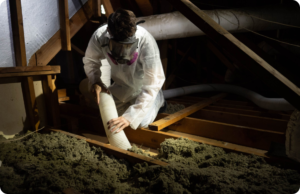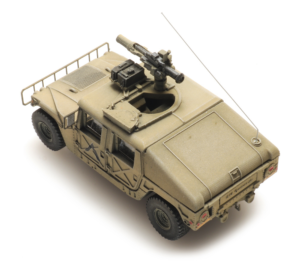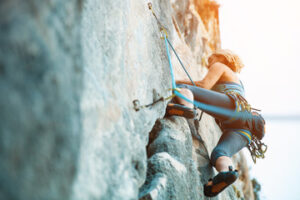Colonoscopy Phoenix is a test that helps your doctor look inside your large intestine. It can also spot polyps that may be cancerous.
This procedure is generally safe. However, complications can occur. These include a reaction to the bowel preparation, a problem with the sedation or bleeding from polyp removal or biopsy.

A colonoscopy is a procedure to examine the lining of the large intestine (colon). It is done by inserting a long, flexible tube with a camera and light at one end called a “colonoscop.” A gastroenterologist performs the exam. It is the most effective way to check for polyps, which are abnormal growths that can sometimes turn into cancer. A colonoscopy is usually not painful and can be performed under sedation.
A doctor can also use a colonoscope to remove polyps, take samples of the tissue to test for cancer, or treat any problems found during the examination. Many doctors recommend regular screenings for colorectal cancer, which is the third leading cause of death in the United States, especially in people over the age of 50. If you have a family history of polyps or a personal history of colon cancer, your doctor may recommend that you get a colonoscopy every 10 years.
The most important thing to remember about a colonoscopy is that you will need to undergo bowel preparation for the exam. This is because the doctor will not be able to see any signs of polyps or pre-cancerous lesions in your bowel if it is full of feces. The preparation process varies from person to person, but it typically involves taking an oral laxative solution for one or two days before the colonoscopy. It is very important to follow your doctor’s specific bowel prep instructions carefully so that the exam can be successful.
If your doctor finds areas of abnormal tissue during your colonoscopy, they will remove them and send them to a laboratory for further testing. The results will determine if the tissue is cancerous or noncancerous, and if it needs to be removed. If the tissue is cancerous, your doctor will likely recommend treatment or surgery to eliminate the tumor.
A sigmoidoscopy is a similar examination of your bowel but does not include the entire colon. It is performed with a lighted instrument called a “sigmoidoscope” that is inserted into the rectum and moved into the lower portion of your colon. It is used to diagnose conditions such as ulcerative colitis, inflammatory bowel disease and polyps.
Preparation for the test
A doctor may recommend a colonoscopy for a variety of reasons. For example, it is often used to look for polyps and signs of colon cancer. It can also help determine the cause of symptoms such as abdominal pain, diarrhea and constipation.
A person who is going to have a colonoscopy must follow a special diet and prepare their bowels ahead of time. This involves taking laxatives in pill or liquid form or using an enema kit the night before and the morning of the procedure. In addition, a person must refrain from eating or drinking anything but clear liquids (such as water, tea and coffee without milk or cream, broth, soda and juice) for one day before the test.
It is important to follow the instructions exactly, as failing to do so can make the procedure difficult and increase the risk of complications. For example, if a person’s bowel isn’t completely empty before the procedure, the doctor might not be able to see or remove all of the polyps and other abnormalities. The person might have to have the procedure done again or they might need to be hospitalized.
The procedure usually takes about 20 minutes, and it is performed at a hospital, doctor’s office or outpatient center. A staff member will take the patient into a procedure room, where a healthcare provider will place an intravenous line in a vein in their arm or hand. This will allow the doctor to give you anesthesia and a sedative directly into your blood stream, which will prevent pain and discomfort during the procedure.
Once you are asleep or sedated, the doctor will insert a thin tube called a colonoscope into your anus and rectum. This is a long, flexible tube that has a light and camera on the end. The doctor will then pump air or carbon dioxide into your colon to inflate it, and they will look at the lining of your colon on a video monitor.
You might experience a little pain or cramping while the doctor is inflating your colon, but this will go away quickly. Some people might notice a small amount of blood in their first bowel movement after the colonoscopy, but this is usually normal and should not be a cause for concern.
The procedure
Depending on your specific medical condition and the reason for the procedure, you may be asked to take laxatives (in pill or liquid form) or use an enema. You may also be told to refrain from eating or drinking anything but water a certain number of hours before the test. It is important to follow these instructions exactly as they are given, as failure to do so could lead to the test being canceled and your health care provider will likely have to repeat the procedure later on to get the needed results.
During the procedure, you will lie down on a hospital bed and your health care provider will place a long, flexible tube with a light and camera on its end inside your colon. The tube is inserted into your rectum and moved into the colon, where it will be inflated with air or carbon dioxide gas to help your doctor see the lining better.
You will probably feel a little pressure or gas pain as the tube enters the colon, but once it is fully inflated, this should not last very long. You may also notice some blood with your first bowel movement after the exam, but this is normal and should not cause any concern.
The entire procedure should not take more than 30 minutes and you will spend the rest of the day in a recovery room until the sedative or anesthesia has worn off and you can return home. For safety reasons, you will need to arrange for a ride home because the sedation or anesthesia makes it unsafe for you to drive.
Your gastroenterologist will go over the results of your colonoscopy as soon as you wake up, although they may not be able to tell you right away if they found polyps or removed tissue for biopsy because these results will take a few days or weeks to come back. You will probably get a written report as well, either by mail or electronically.
If you have a family history of colon cancer or an inherited disease that raises your risk, your gastroenterologist will recommend that you have a regular colonoscopy every 10 years. However, if the results of your previous colonoscopy were negative, your doctor will likely consider it unnecessary to have another one for several years.
Post-procedure care
Some cramping and bloating after a colonoscopy is normal, but you should call your doctor if you have a lot of bleeding or pass large clumps of blood when you poop. It is important to keep track of the amount of fluid you drink after the procedure, so your doctor knows how much you are drinking and whether or not it’s enough.
During the exam, you lie on an examination table and the doctor inserts a long flexible tube with a camera at its tip into your anus and rectum. The scope has a channel that allows the doctor to pump air, carbon dioxide or water into your colon, which inflates it for better viewing of the lining. Your doctor may also insert a special tool to remove any polyps, abnormal growths in your colon that could become cancerous. The doctor will usually also take tissue samples (biopsies) from any polyps or areas of concern. These may be sent to a lab for analysis.
If the doctor finds anything that needs further investigation, they may suggest treatment or additional tests. A colonoscopy can find a wide variety of things, such as enlarged lymph nodes and tumors, colon polyps (abnormal growths that could develop into cancer), and other conditions that require further evaluation.
You will stay in the hospital or outpatient center for about an hour after the procedure to give the sedation or anesthesia time to wear off, and so that your healthcare team can monitor you for any complications. You should ask someone to drive you home afterward, because the sedation or anesthesia can make it difficult to think clearly and respond quickly, especially if you are feeling nauseous.
Before you have your colonoscopy, you should review your health history with your doctor and tell them if you have any serious health problems or allergies, particularly to medicines. You should also mention any previous negative reaction to sedation or anesthesia, and tell your doctor about all the prescription and over-the-counter medicines, vitamins and supplements you take. Some medicines, such as aspirin and ibuprofen, can affect how well the sedation or anesthesia works and should be stopped for a few days before your procedure. Blood-thinning medications, such as warfarin (Coumadin) and heparins; and newer anticoagulants that help prevent blood clots, such as dabigatran (Pradaxa) and rivaroxaban (Xarelto); may need to be temporarily stopped or altered as well.








